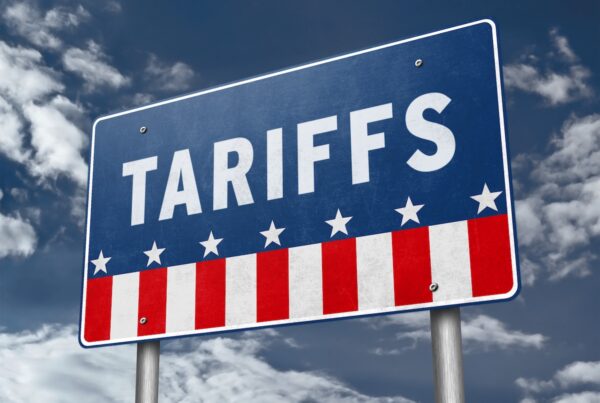Never Evergrande
The failing financial position of China Evergrande Group (3333 HK), one of China’s largest residential property developers, has captured the world’s attention for fears of a broader economic and social fall-out. Property investment and related construction/appliance activity is a substantial contributor, to China’s GDP (25% by some estimates). Hence, the risk of a sudden collapse of Evergrande could threaten capital providers and home buyer sentiment leading to a downturn in property investment and the Chinese economy. This of course also could have far reaching implications for the regional and global economy. The challenge is to understand the depth of the issues facing Evergrande, its industry competitors and the Chinese residential market.
So before we move on to commenting on the Evergrande situation, we should outline our global REIT portfolio exposure to Hong Kong and Greater China. The portfolio has no direct exposure to the Chinese property developers, including Evergrande, a situation we have maintained for much of the past 15 years. We have long doubted the quality of the earnings and the strength of their balance sheets.
Furthermore, as of last week, our total portfolio exposure to the China region was ostensibly through Hong Kong property stocks, constituting 4% or less of the portfolio. This represents an underweight position relative to the FTSE EPRA NAREIT Developed benchmark.
In Hong Kong we have two relatively modest exposures: Sun Hung Kai (16 HK) and Link REIT (823 HK). Both stocks have solid balance sheets (Loan To Value of less than 20%, and Debt to Equity of less than 30%). Furthermore, they have limited short term refinance risk and are not participants in the high-yield bond market. Link REIT is focused almost exclusively on rental income derived from convenience retail. Sun Hung Kai’s earnings are a mix of development trading and rental income, mostly derived from HK but with a burgeoning China platform. Hence, we see limited direct financial risk to either stock from the Evergrande issue.
Thus, given our limited direct exposure, the major challenge relates to the contagion effects of Evergrande AND broader policy measures being applied across Greater China. This applies equally to Hong Kong where, for example, the national security law triggered social unrest in 2019. More specifically for the Hong Kong property developers, ineffective policy measures to address the longterm shortage of housing supply has raised the spectre of the government becoming more forceful, with press speculating that the government could potentially ‘resume’ developers farmland holdings (ie unzoned land for future residential conversion that the developers have owned, in some cases, for many years and thus held at very low book values).
We stress that pontificating on the broader implications for Chinese central planning policy and the consequent outcomes of Evergrande’s collapse is a fool’s errand. Recall few experts predicted the U.S. subprime crisis, and countless pundits have been predicting the demise of the Chinese residential market for a decade. That’s not to say we shouldn’t try to analyse the drama before us, and we have reached out to a broad range of interested parties to get a balanced perspective.
Firstly, our channel checks support the view that the housing boom in mainland China is largely over. Having maintained a high-risk capital structure reliant on continued if not accelerated home price dynamics, Evergrande is a high profile casualty of this changed dynamic and there will likely be others albeit likely not on its scale.
Evergrande is one of China largest property developers and ranked 4th in terms annual housing production. Hence, the consequences of its demise are indeed significant and much depends on the response of the Chinese Government. Whilst by itself Evergrande is not too big to fail, the broader consequences on the housing market, financial institutions and the economy are meaningful, particularly if it leads to the rapid collapse of many other highly leveraged players in the market. Direct stakeholders include purchasers of unfinished homes, construction workers and building materials suppliers as well as its debt and equity investors. Equity investors and offshore bond holders should prepare for the worst, but they should not be shocked given Evergrande’s precarious financial position has been evident for some time (the recognised “high yield bond market” in which Evergrande participated should be enough warning).
The Chinese Communist Party (CCP) has warned in the past 2-3 years that it is seeking to address some imbalances in the economy. Whilst part of the motive of the CCP is to curb the influence of large private enterprise and high-profile individuals, there also appears to be a deliberate policy to reign in escalating education and housing costs in an attempt to address low birth rates/stagnating population growth.
 Source: Bloomberg
Source: Bloomberg
Specific to the residential property sector, President Xi Jinping is often quoted saying “houses are built to be inhabited, not for speculation”.
Buoyed by seemingly ever rising land prices and a constantly growing economy, as highlighted in the chart below, Chinese residential developers have maintained higher financial leverage then their global peers.
Concerned about this dynamic, from a policy perspective, the Chinese government had been tightening lending conditions for developers for some time – most recently initiating the ‘three-red-lines’ policy1 introduced in August 2020 which imposes three specific leverage metrics targets on property developers. This tightening of lending conditions has been well telegraphed (which again stands in contrast to the lead up to the GFC in the US) and is warranted given the high leverage of Chinese property developers.
Indeed, policy tightening is a major contributing factor to the timing of Evergrande’s troubles, but principally because it was already in a self-inflicted precarious financial position as the graph below illustrates.
Global Snapshot Sample – Publicly Listed Residential Property Development Companies
 Source: S&P Capital IQ
Source: S&P Capital IQ
We do not believe the challenges facing Chinese developers and their lenders is likely to be a crisis on the magnitude of Lehmans. Whilst there are “shadowy” recesses in the financial system, there is limited evidence of low doc NINJA (No Income No Job Applicants) type loans that riddled the US banking system in the lead up to the GFC. Indeed, as we have pointed out, the government has deliberately put in measures to forestall such a crisis. Stress testing conducted by sell-side banking analysts generally concurs that the Chinese banking sector should be able to manage various default scenarios for both Evergrande and the Chinese property sector more broadly. The Chinese banking regulator is directing banks to maintain liquidity to other property developers to avoid a broader loss of buyer confidence in developers ability to deliver.
Nevertheless, we acknowledge the CCP’s efforts to balance the economy could fail and wider contagion impacts depend on whether Chinese homebuyer confidence diminishes more broadly. This is accentuated by the way in which off the plan home buyers make progress payments throughout the construction phase in China, putting more risk on the home buyer when developers fail and are unable to deliver the completed project.
The Chinese Government has been seeking to pre-emptively deal with high leverage in parts of the real estate industry and no doubt appreciates the risk (the moral hazard) of propping up bad businesses. Hence, we will not be at all surprised to see the liquidation or significant restructure of Evergrande’s affairs but do expect it to be executed in an orderly manner, potentially with SOE’s called upon to assume responsibility for completing major works in progress.
Nevertheless, it is fair to expect a rocky path for coming months due to the uncertainty around the restructure and the extent of the issue more broadly. Access to foreign capital is likely to be curtailed for some time so much depends on the Chinese banking system’s ability to fill any voids in order to reduce the extent of a housing slow down.
Crucially, the CCP has no motive to undermine the housing market, the populace has most of its wealth invested in residential and, as mentioned at the outset, it is a significant driver of the economy. Hence, we expect the government will pull levers necessary to stabilise the market.
The challenges facing China’s residential market in relation to demographics and affordability are by no means isolated. The collapse of Evergrande brings into sharp view the dynamics and places pressure on Chinese policy makers to underpin values whilst addressing affordability issues. We stress this is a challenge not confined to China as governments and societies around the world also face the challenge of how to manage residential affordability.
In terms of the broader Global REIT sector, we remind readers that financial leverage is moderate, debt sources are diversified and debt maturities are well laddered. We therefore see limited risk of a repeat of the GFC liquidity crisis which impacted the REIT sector. Our portfolio remains skewed towards exposures which have sound balance sheets, prudent management teams and healthy operating conditions where landlords continue to have pricing power.
1 The three red lines
1. Liability-to-asset ratio (excluding advance receipts) of less than 70%
2. Net gearing ratio of less than 100%
3. Cash-to-short-term debt ratio of more than 1x
If the developers fail to meet one, two, or all of the ‘three red lines’, regulators would then place limits on the extent to which they can grow debt.
Disclaimer:



